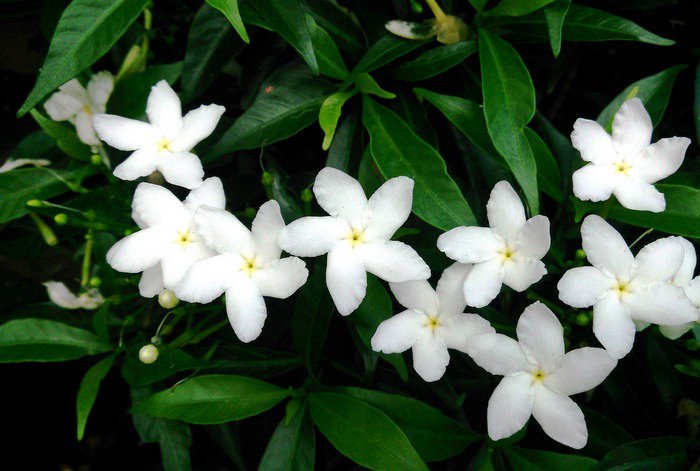Gardening: A shrub with no enemies – allamandas

PHUKET: It’s astonishing what one can learn by watching Mother Nature at work. As readers know, my garden has long been plagued by hawk moth caterpillars, but what is fascinating is that these voracious munchers have a distinct pecking (or should I say munching) order.
Their diet, in strict order of preference, is tabernaemontas, then periwinkles, next adeniums and then neriums or oleanders.
Annoyingly, the delicate tabernaemontana, or pinwheel flower, with its tiny evergreen leaves and white blooms, is the least able to bear these larval assaults: one day’s activity and a plant can be stripped of foliage.
All these shrubs not only possess poisonous foliage and fruits, but they also belong to the same large family of apocynaceae. They are often gardeners’ favorites: showy, flowering shrubs, at home in tropical conditions. This group, all toxic in varying degrees, are revealing their secrets to science, proving important new sources of heart stimulants, such as cardiac glycosides. Traditional medicine has long been aware of their curative properties.
Nonetheless, there are inconsistencies. While it has been conjectured that caterpillars derive immunity from eating toxic foliage, it seems that certain predators couldn’t care at all about that.
Plumerias (frangipanis), for instance, though victims of a worldwide affliction called rust, seem impervious to larval attacks, while allamandas, my personal top shrub, seem, in Thailand at least, to have no enemies at all.
Allamandas are deservedly popular. Though they grow with sufficient vigor to be rated invasive in parts of Queensland, they adapt perfectly to Phuket’s hot, humid climate and my garden would be the poorer without them.
A robust grower, allamanda cathartica will bloom more or less continuously in tropical environments provided the soil is not too alkaline and the roots are not allowed to dry out completely. Mature growth can be cut back, especially if the lower stems become straggly due to limited exposure to the sun.
Yet another shrub with curative properties, the allamanda contains iridoid lactones, which is used for liver complaints, malaria and even in the fight against certain cancers.
Its less spectacular cousin, allamanda schotti, has narrow leaves and similar, but smaller
yellow flowers. Very popular as a massed border plant for road verges or central reservations,
it is even hardier than A cathartica.
Less robust is allamanda blanchettii, a shrub that has the characteristic trumpet-shaped blooms, but in a shade of dusky rose-pink. Like all allamandas, it seems completely disease and caterpillar free. Quite a bonus.
Catch Patrick at PhuketGazette.net Sunday morning next week, when he reveals more of his gardening expertise.
— Patrick Campbell
Latest Thailand News
Follow The Thaiger on Google News:


























